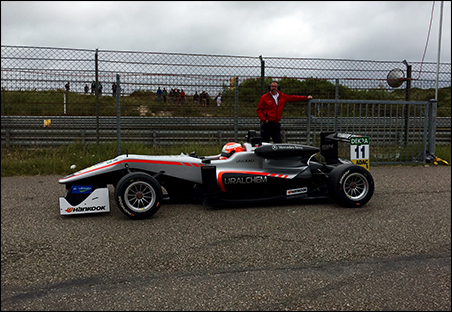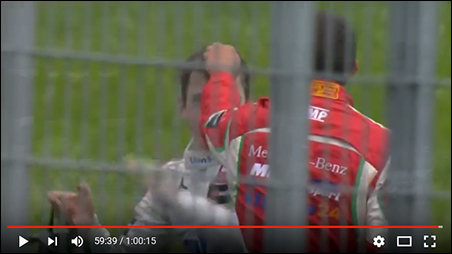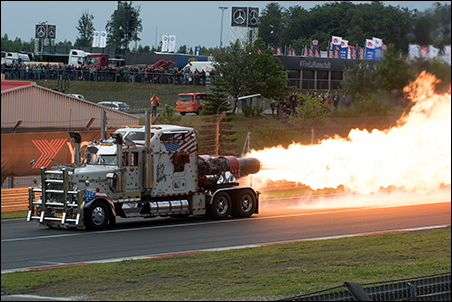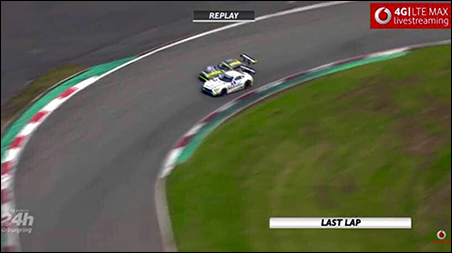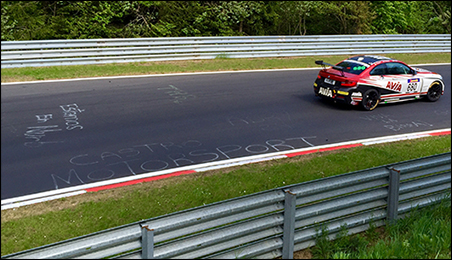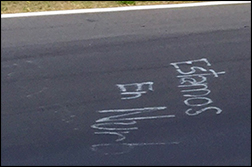I’ve been a race fan for most of my life. I’m proud of that and I strongly feel the motorsport fan community has a good thing going. In all the years I’ve followed the sport I’ve never encountered a motorsport hooligan; and up until this day I’ve never had any of my belongings stolen at a race track. *knocks on wood* I also like that the fan community feels like a big family, especially when it’s cold and rainy and you’re all together huddled beneath a grandstand to wait out a weather-induced red flag.
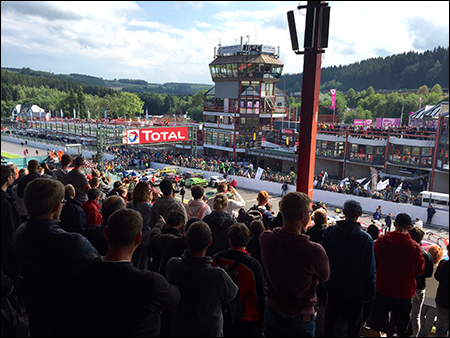
However, human beings are never perfect and neither is the motorsport fan community. I’ve encountered situations over the years that left me thinking: “Is this really necessary?” One of the most poignant happened last weekend, during the final hour of the 24 Hours of Spa. A rain shower had unexpectedly hit the track and was causing chaos. Cars on slicks were sliding off the asphalt left, right, and centre. At some point it became evident that the utterly out-of-control Konrad Lamborghini was going to hit the beached Black Falcon #57. Several seconds before it happened many people on my grandstand were already cheering and when the crash finally took place they screamed their lungs out and even danced. Seeing as the crash was big enough to hurt someone, I found this rather appalling behaviour.
The incident left me rueing the fact that there is no Code of Conduct for Race Fans, a bit like the Pirate Code featured in Pirates of the Caribbean. I know the rules in that code are “more like guidelines” than actual laws, but to me the codex always seemed a neat thing to have. So on the way home last Sunday night I came up with a list of ten rules that I think race fans should follow to make the fan community even better. No doubt there’ll be people who disagree with these rules, but that’s the beauty of democracy, isn’t it? Anyways, here are my ten cents.
- At a track you’ll be surrounded by a myriad of people who support different teams and/or drivers than you do. Accept this. Don’t pick fights with them or yell things at them.
- Never boo a driver/team who makes a public appearance in the fan area or the pitlane. It’s insulting and they won’t be able to defend themselves against a crowd.
- Never boo a driver/team who stands on the podium. This is possibly even more insulting than 2, because not only are they unable to defend themselves against a crowd, they can’t even leave the podium if they wanted to.
- Never cheer when you see a crash, regardless of who is in the car or what you think of them. Accidents are part of this sport, but they’re also what makes this sport dangerous. Even if the cars are safer than ever now, even the most innocent-looking crash can still kill a driver. So if you must cheer, do so when the crashed driver gets out of the car unharmed.
- If a sign says “team personnel only”, don’t try to sneak in regardless. This’ll only put teams on their guard and ultimately make them more strict.
- Similarly, don’t try to sneak into a pitlane or onto a race grid when you have no permission to be there. This’ll only make organisers more strict and less likely to organise pit/gridwalks.
- Never insult track marshalls. They may not always be perfect. They may not always be right. They may sometimes tell you to get out of an area where you’re allowed to be. But always remember that without them there would be no racing at all. Reason with them if you must or find a second marshall to prove the first one wrong, but don’t call them names.
- Treat grid/promo girls with respect. It’s hard for me to understand why they evoke the responses in male fans that they do, as I see no appeal in the presence of scantily-clad women (or scantily clad men, for that matter) on a race track. But if you’re inclined to look at them, please treat them as you would any other woman. Don’t stand in front of them and loudly comment on who is prettiest/ugliest. Don’t take pictures up their skirts. Don’t touch them unless they’ve given you permission.
- Don’t compare a female driver with a grid or promo girl. This is the 21st century. Girls are capable of fulfilling any role in motorsport that they want and there’s no need to revert them to the role they played historically.
- Obviously 9 also goes for female team managers, engineers, mechanics, communication employees, catering workers, etc.

